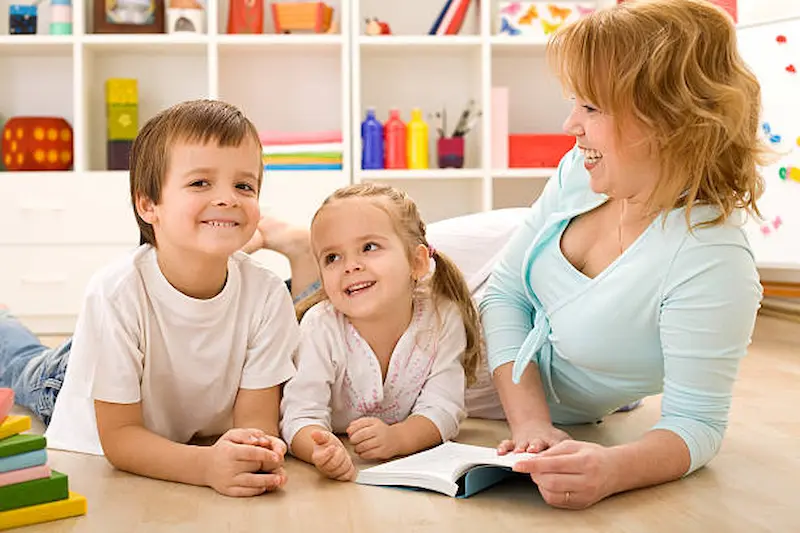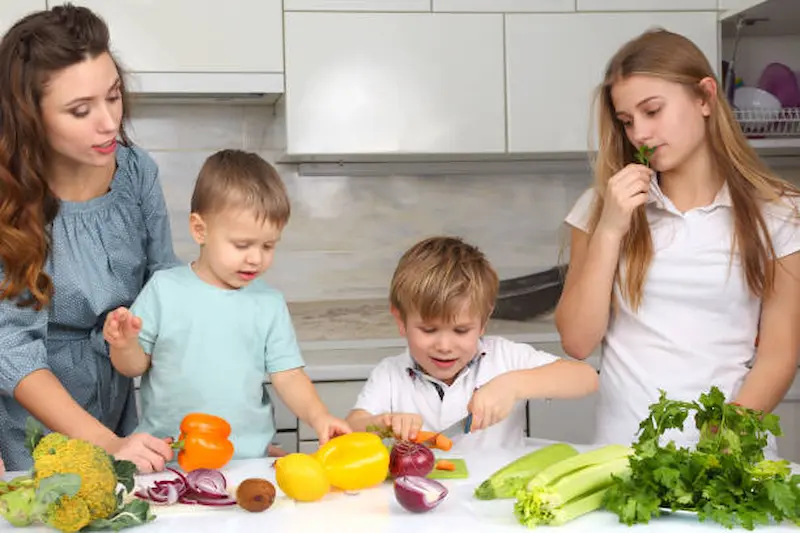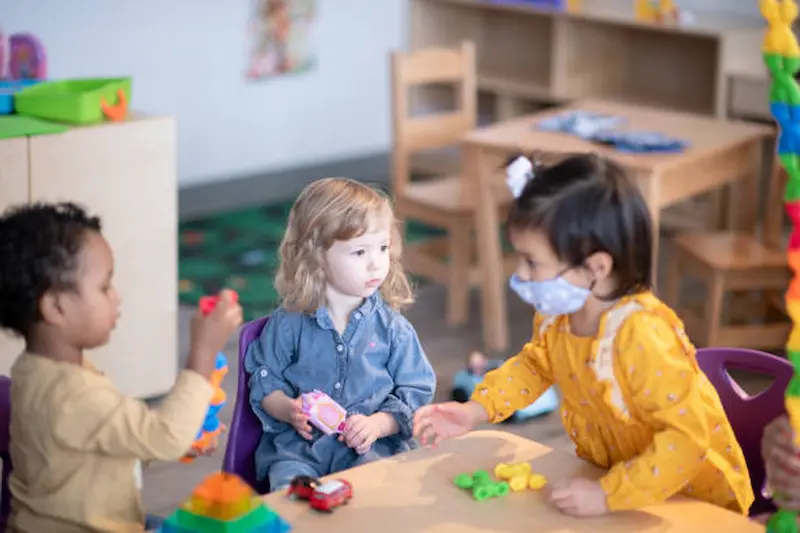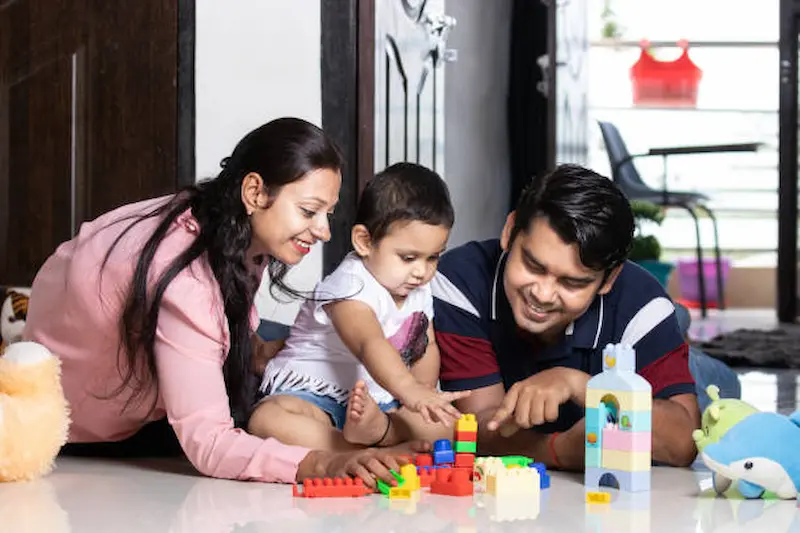Parenting techniques for 3-year-olds involve using effective strategies to guide behavior, foster development, and create a nurturing environment. These techniques typically include positive reinforcement, clear communication, and age-appropriate discipline. The importance of parenting techniques for 3-year-olds lies in shaping their early development and laying the foundation for lifelong skills. Effective strategies like positive reinforcement and consistent discipline contribute to their emotional, social, and cognitive growth. Setting the stage for a happy and healthy childhood involves creating a supportive environment, fostering positive habits, and encouraging exploration. Parental guidance during the formative years significantly influences a child’s overall well-being and outlook on life.
In this blog, discover valuable parenting techniques for 3-year-olds. From positive reinforcement to clear communication and age-appropriate discipline, these strategies aim to foster a child’s emotional, social, and cognitive growth during this critical developmental stage.
Table of contents
- Understanding Your 3-Year-Old
- Positive Discipline and Behavior Management
- Creating a Safe and Stimulating Environment
- Nutritional Guidelines for 3-Year-Olds
- Sleep and Rest
- Promoting Physical Activity
- Building Social Skills
- Toilet Training and Personal Hygiene
- Health and Safety
- Parenting Techniques for Challenging Behavior
- Common Parenting Mistakes to Avoid
- Celebrating Milestones and Achievements
- Conclusion
- Frequently Asked Questions ( FAQs )
Understanding Your 3-Year-Old

A. Cognitive development at age 3
Child cognitive development at age 3 involves rapid language acquisition, expanding vocabulary, and enhanced problem-solving skills. Introduce age-appropriate activities that not only stimulate curiosity and creativity but also support and enhance child cognitive development.
B. Emotional development and milestones
Emotional development and milestones include growing independence, developing a sense of self, and expressing a wider range of emotions. Encourage emotional expression and provide a secure environment for exploration.
C. Social development and peer interactions
Social development and peer interactions become more prominent. Foster positive social skills through playdates, encouraging sharing, and promoting empathy in interactions with others.
D. Physical development and motor skills
Physical development and motor skills advance with improved coordination, balance, and fine motor control. Engage in activities that enhance gross and fine motor skills, supporting overall physical development.
Positive Discipline and Behavior Management

Positive discipline emphasizes teaching children appropriate behavior rather than punitive measures. Set clear expectations, use positive reinforcement, and establish consistent consequences for actions, including incorporating positive affirmations for kids. Encourage open communication, allowing children to express themselves. By modeling desired behavior, providing constructive feedback, and offering praise, parents can create a nurturing environment that fosters self-control and responsibility. Positive discipline not only shapes immediate behavior but also contributes to a child’s long-term emotional and social development, promoting a positive and respectful parent-child relationship based on constructive interactions and a foundation of positive affirmations.
Creating a Safe and Stimulating Environment
Ensure a safe and stimulating environment for your 3-year-old by childproofing your home and providing age-appropriate activities, emphasizing the importance of teaching kids responsibility. Remove potential hazards, secure furniture, and use safety gates to create a secure space. Foster curiosity and learning through toys and activities that encourage exploration and creativity.
By combining safety measures with stimulating surroundings, you not only provide a nurturing space that supports their physical, cognitive, and emotional development but also instill a sense of responsibility. This approach promotes a healthy and enriching environment for your child, fostering a well-rounded and responsible individual.
Nutritional Guidelines for 3-Year-Olds

A. Building a balanced diet
Building a balanced diet is crucial for a 3-year-old’s growth and development. Include a variety of fruits, vegetables, whole grains, proteins, and dairy in their meals. Ensure a colorful plate to provide a spectrum of essential nutrients for their developing bodies and brains.
B. Dealing with picky eaters
Dealing with picky eaters involves patience and creativity. Introduce new foods gradually, involve them in meal preparation, and create a positive eating environment to encourage exploration. Incorporating familiar favorites alongside new options helps establish a diverse and well-rounded palate.
C. Healthy snacks and meal planning
Healthy snacks and meal planning contribute to optimal nutrition. Offer nutritious snacks like fruits, vegetables, and yogurt between meals, and plan meals with diverse options to meet their dietary needs. Balancing the food groups ensures they receive the essential vitamins and minerals necessary for their growth.
D. Hydration and proper portion sizes
Hydration and proper portion sizes are crucial elements. Ensure they drink enough water throughout the day to stay hydrated. Serve appropriate portion sizes to support overall health and well-being, fostering healthy eating habits that will benefit them as they continue to grow.
Sleep and Rest
Prioritizing adequate sleep is crucial for a child’s overall well-being. At age 3, children typically need around 10-12 hours of sleep per night. Establish a consistent bedtime routine to promote healthy sleep habits. Ensure a comfortable sleep environment, free from distractions. Daytime naps remain important, usually ranging from 1-3 hours. A well-rested child is more likely to exhibit positive behavior, improved cognitive function, and emotional regulation, emphasizing the importance of creating a conducive and consistent sleep routine.
Promoting Physical Activity

Encourage regular physical activity for your 3-year-old to support their overall health and development, considering the inclusion of mindfulness activities for kids. Incorporate age-appropriate activities like active play, dancing, and simple games that enhance motor skills and coordination. Aim for at least 60 minutes of active play daily to promote muscle strength, cardiovascular health, and a positive attitude towards physical well-being. Creating a fun and engaging environment not only fosters physical health but also contributes to the development of mindfulness and awareness. This approach instills a lifelong appreciation for an active and healthy lifestyle, promoting both physical and mental well-being.
Building Social Skills
Facilitate the development of crucial social skills in your 3-year-old by encouraging positive interactions with peers and adults, incorporating the concept of knowledge sharing. Foster sharing, taking turns, and expressing emotions appropriately through play and structured activities. Encourage empathy by discussing feelings and modeling kind behavior. Provide opportunities for socialization, such as playdates or group activities, to enhance their communication and cooperation skills. Building a strong foundation for social development at this age, which includes knowledge sharing, sets the stage for healthy relationships and effective communication in the future, promoting a well-rounded and socially adept individual.
Toilet Training and Personal Hygiene
Initiate toilet training by recognizing signs of readiness, such as showing interest and staying dry for longer periods, incorporating the importance of self-care. Create a consistent routine and provide positive reinforcement for successful attempts.
Be patient, understanding accidents are part of the learning process. Introduce personal hygiene habits, teaching them to wash hands independently. By approaching toilet training with patience, positive reinforcement, and gradual independence in personal hygiene practices, parents not only guide their 3-year-olds toward a successful and comfortable transition but also instill the foundations of self-care for future well-being.
Health and Safety

Prioritize your 3-year-old’s health and safety by maintaining regular check-ups, vaccinations, and promoting good hygiene habits, including the importance of cultivating good habits for kids. Childproof your home to prevent accidents and educate them about safety rules. Teach basic health practices, like handwashing, to instill lifelong habits. Be vigilant about potential hazards, such as small objects or household cleaners. By creating a safe and health-conscious environment, parents can ensure their child’s well-being and contribute to a foundation of lifelong health habits, promoting a healthy and thriving future for their child.
Parenting Techniques for Challenging Behavior
Address challenging behavior in 3-year-olds with effective parenting techniques, emphasizing the importance of positive discipline. Stay calm and consistent in setting clear expectations. Use positive reinforcement and praise for desired behaviors, creating a positive environment.
Employ redirection to guide them away from problematic actions and toward more appropriate choices. Foster open communication, allowing them to express emotions. By understanding the underlying causes of challenging behavior and responding with patience and empathy, parents can not only address immediate concerns but also promote positive development, building a strong foundation for effective behavior management and emphasizing the principles of positive discipline.
Common Parenting Mistakes to Avoid

A. Overindulgence and spoiling
Overindulgence and spoiling can hinder a child’s understanding of limits and consequences. Strike a balance between love and setting boundaries, fostering healthy independence and gratitude.
B. Inconsistency in discipline
Inconsistency in discipline confuses children, making it essential to establish clear expectations and consequences. Applying them consistently helps create a stable and secure environment, promoting better behavior and emotional well-being.
C. Comparing your child to others
Comparing your child to others fosters unhealthy competition and may impact their self-esteem. Celebrate their individual strengths and achievements, nurturing a positive sense of self-worth and confidence.
D. Neglecting self-care as a parent
Neglecting self-care as a parent can lead to burnout and diminish your ability to support your child effectively. Prioritize your well-being to provide the best guidance, modeling a balanced and healthy lifestyle for your child, ultimately fostering a stronger and more positive parent-child relationship.
Celebrating Milestones and Achievements
Acknowledge and celebrate your child’s milestones and achievements to boost confidence and foster a positive self-image, incorporating the element of personal development. Whether it’s mastering a new skill, reaching an academic milestone, or demonstrating kindness, recognition promotes a sense of accomplishment. Offer praise, create a celebratory atmosphere, and involve family and friends.
Celebrating achievements not only reinforces positive behavior but also strengthens the parent-child bond, creating a supportive environment that encourages continuous growth and development, contributing to the child’s overall well-being and laying the groundwork for their ongoing personal development.
Conclusion
Parenting techniques for 3-year-olds encompass employing effective strategies such as positive reinforcement, clear communication, and age-appropriate discipline. These techniques are crucial in shaping the child’s behavior, emotional well-being, and social development. By providing consistent guidance and support, parents can instill positive habits, promote independence, and lay the foundation for a healthy and harmonious parent-child relationship. Parenting a 3-year-old presents challenges as they navigate newfound independence, emotional expression, and communication. Patience, consistency, and understanding are key in addressing and overcoming these challenges while promoting a positive parent-child relationship.
Elevate your child’s learning journey with BrightChamps, the leading EdTech company offering a transformative blend of robotics, financial education, and coding courses.
To get your hands on more such articles, educational content, and free resources on coding for kids, robotics courses, game development, etc., check out the BrightCHAMPS Blog Page now!
Frequently Asked Questions ( FAQs )
A1. Typical developmental milestones for 3-year-olds include language expansion, social interaction, and basic motor skills.
Q2. How can I handle my child’s temper tantrums effectively?
A2. Handle temper tantrums effectively by staying calm, offering comfort, and setting clear boundaries.
Q3. What is the recommended daily screen time for a 3-year-old?
A3. The recommended daily screen time for a 3-year-old is around 1 hour, emphasizing high-quality educational content.
Q4. How do I encourage my child to eat a balanced diet?
A4. Encourage a balanced diet by offering a variety of nutritious foods and involving your child in meal preparation.
Q5. What are the signs of readiness for toilet training?
A5. Signs of readiness for toilet training include showing interest, staying dry for longer periods, and expressing discomfort with soiled diapers.


 We are an army of educators and passionate learners from BrightChamps family, committed to providing free learning resources to kids, parents & students.
We are an army of educators and passionate learners from BrightChamps family, committed to providing free learning resources to kids, parents & students.








